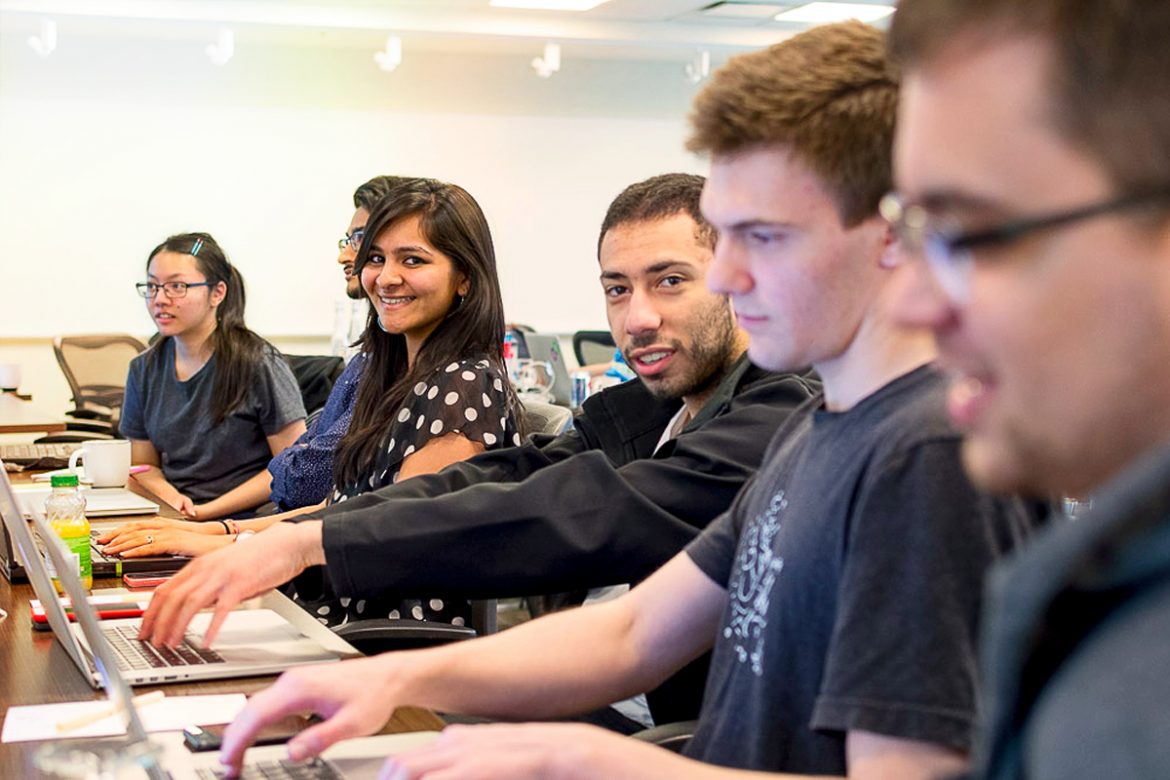Business View Magazine interviews Chris Izquierdo, Founder and CEO of DevFacto Technologies as part of our focus on best practices, Canadian businesses.
DevFacto Technologies was founded in 2007 by three old friends who, when they got together, would talk about how they believed they could create something better in the field they were in. “The reason that we wanted to start DevFacto is we had worked for consulting companies in the past – all three of us had consulting and IT backgrounds; we were software professionals – and we always felt that they didn’t treat their employees as well as they could,” says Co-Founder and company CEO, Chris Izquierdo. “So, we wanted to empower employees to make decisions, to have a great standard of living, and, we believed, that in response to that, those same employees would do great work and would be very loyal to our company and our brand. Over the last ten years, that has proved right. It was the right thing to do and it yielded great results.”
Today, DevFacto has 120 employees, and three offices in Canada: Edmonton and Calgary in Alberta, and Regina in Saskatchewan. “Those are the brick-and-mortar offices that we have,” says Izquierdo. “And that allows us to do work pretty much anywhere in North America – we have clients in the U.S.; we have clients in western and eastern Canada; we have clients in Europe; in the Middle East. And, even though we primarily focus on western Canada, if somebody outside that market wants to do business with us, we won’t say ‘No.’ We’ll establish a deal that makes sense for both parties and go ahead and do business.”
Izquierdo explains the five divisions, or practices, of his company: “We have Portals and Collaboration, where we focus on building collaboration communication solutions for our clients, whether it is an intranet, an extranet, or a workflow solution that allows employees to work better, together. When you look at our typical clientele in that practice, it’s usually a fairly large organization – anywhere between 1,000 to 20,000 or more employees who require a portal in order to be able to communicate and message better.
“We also have an Enterprise Mobility practice. Our focus there is on building mobile applications that run on mobile devices and tablets in some of the larger organizations in North America that push business processes and collection of data right into the field. So, if you’re a worker, working on a truck, you might deliver, for example, your work schedule to a tablet: ‘Here’s where you need to go first, then go to these other locations,’ and so on. We automate all that. It used to be either paper driven or telephone driven. So this allows us to optimize all those business processes.
“We also have Software Design and Delivery. This is a practice that integrates systems in an organization. It targets medium- to large-size organizations where they have a lot of disparate systems that run their enterprise, but there’s no common way either to communicate or to do common reporting. We also have a Managed Applications Services practice, and that is responsible for managing any of the applications that we build. So, if a client doesn’t want to manage an application, we can do it.
“And, last but not least, we have a Business Intelligence and Analytics practice. That’s about business intelligence, reporting analytics, data warehousing, and so on. Every organization is collecting a lot of information and data, but they’re not turning that data into insights that they can make decisions on. We help them do that.”
Regarding how DevFacto separates itself from the competition, Izquierdo offers the following: “For us, software is the end product. It has to be great, it has to work the way you expect it to work, it has to meet or exceed your expectations. What we have is a process that demystifies the building of that solution. It starts with an innovation phase, which is fairly unique to us, where we help our clients rethink the solution that they believe they want to build. People build solutions within the framework that they operate in day in and day out. And they typically don’t take the time to expand the possibilities of what that framework could be. They might be missing some significant improvements that they can do. So, we have what we call an ‘ideation,’ which is the first step in any of the solutions that we build, where we help the customer innovate. We bring in the end users of the solution that we’re going to build, or if that’s not possible, the managers, and have a conversation about exploring possibilities. Out of that, we do a design; out of that design, we do an implementation; and finally, of course, the employment and sustainment of the solution.
“And throughout that whole process, what we focus on – and this is by design – is in providing a ‘wow’ experience. A lot of companies, when they’re managing a project, look at scope, they look at schedule, they look at budget. And those three are really important. We don’t deny that and we also focus on them. But on top of that, we overlay what I think is even more important, which is ‘How has your experience been with us?’ And we track that experience as our most important metric. And the way we track it is what is called the Net Promoter Score, the NPS, which is basically a survey that has a couple of questions like, ‘How likely are you to recommend our services on a scale of one to ten and what’s the reason for your score?’ And, depending on what you’re telling us throughout the project – we don’t just do it at the end, we do it throughout – there are different processes that we have in place to ensure that if you’re giving us a low score, we help bring that score higher and move you from a detractor to a promoter. So that ‘wow’ experience is what we focus on – it starts with innovation, then follows with all the touch points that we have intentionally designed for you to feel comfortable with what we’re doing, and for you to enjoy the full experience.”
Izquierdo also believes that innovation is the lifeblood of the company: “I tell everybody in my organization that the worst phrase in the English language is: ‘We’ve always done it that way.’ If anybody utters those words, we have a serious conversation about it because the status quo is never good enough. We have to continue to innovate and improve. For example, we’re looking at expanding into eastern Canada and opening an office, maybe in Ontario, potentially the Greater Toronto area. We’re also shifting our focus and starting to invest more and more in products. So we’re productizing some of the solutions that we continue to build year after year for our customers, and we’re bringing them to market based on a subscription model; you can deploy it and get the benefits of continuous enhancements by our team. And we have the Business Intelligence practice on the analytics side that we’re also investing a lot of our time and effort and focus on. Those three things will be our strategy for the next three to five years.”
“Our promise is to build software that humans love to use,” Izquierdo states in summation. “A lot of enterprise software that companies use, they use because they have to, not because they want to. The software doesn’t work in the way the users expect it to work; it works against them and they adapt their business processes in order to leverage that solution. We have a user experience team that focuses solely on making sure that the solution works the way you expect it and it exceeds your expectations. So, for us, every software that we build, we build with the user in mind. Every software that we build has to be a software that you love to use.”
AT A GLANCE
WHO: DevFacto Technologies
WHAT: A software consulting firm
WHERE: Edmonton, Canada
WEBSITE: www.devfacto.com




